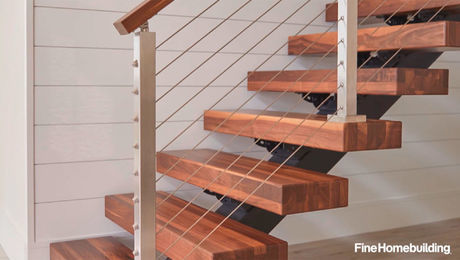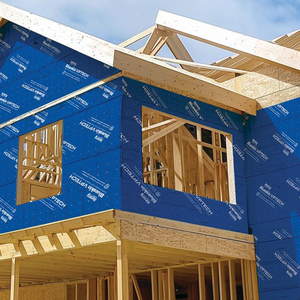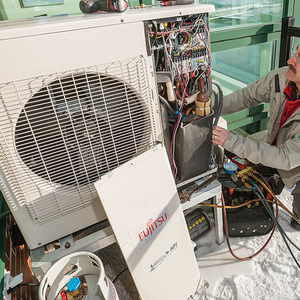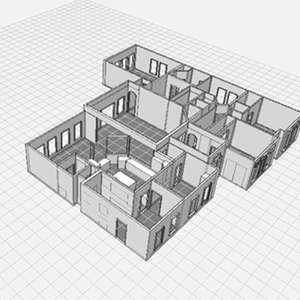14 G wire in a 20 amp circuit. What to do
I have been straightening out wiring in my man cave/workshop. Thanks to all that recently helped on an issue. New problem: I have a long circuit on an 20 amp GFCI breaker. Most of the run is 12/2. At the tail end of the run, there are 5 receptacles on 14/2. I know the 14/2 wire is over-amped. How much of a problem is this really? I can’t really get into the walls to fix it without a LOT of work. If the consensus is that I must rid myself of the 14/2, then I think I will abandon the segment on 14/2 and run a few outlets with conduit and external mount boxes. Thoughts? Am I worried too much about the 14/2? Thanks



















Replies
Switch out the breaker, put in a 15 amp version.
A lot of the strip end holes in switches and recepticles won't accept 12/2. You have to use the screws. They do that so you won't make runs from the switch or plug on 14/2. You're probably not over-amped, depending on what equipment you plug in. You could just remove the boxes, lay a long piece of 1/X over the holes with your external run of boxes on that and not worry about the holes. Paint it to match. Try to plug the heaviest draw equipment into different plugs, if possible.
Voltage drop in the #12 wire on a long circuit may render this circuit to effectively 15 amp capacity. So the 15 amp breaker may be the best option.
How long do you estimate the run from the panel?
As I understand it (and I am not an electrician, but I try to understand this stuff--that is, I may well be wrong re the following and if your house burns down I'm not only willing to retract what I'm saying, I'm willing to pay Al Gore to deinvent the internet
If the 5 receptacles on 14 G are 15 ampe'ers, the practical reality is that it is unlikely you'd overload the bits of 14G 15 amp wiring - especially given the actual load rating for 14 G is >20 amps (without a safety margin.)
However, sometimes we all do stupid things, and you could, say, using a power strip on one of them, overload that bit of 14G and cause problems
The safe, code compliant solutions are (i) replace the breaker, (ii) rewire, or (iii) "de-wire" those receptacles.
A 15 amp duplex receptacle means that each receptacle of the pair can support a 15 amp load, but the two loads together can safely exceed 15 amps.
Wired with 12ga and on a 20A breaker, theoretically two 10A loads could operate at one time. Best practice dictates that you should not load a circuit to more than 80% of capacity.
Code says you should replace the wire or downsize the breaker. However, technically #14 can handle 20A, it's just that for various secondary reasons it's ill-advised and code prohibited. If this is for your own use and you're reasonably confident that you won't overload the circuit then leave fixing the situation for your "to-do" list (and put your more immediate efforts into the 100 other things that need doing just as badly). If you were selling, though, you should probably remedy the situation.
(Whew, given your knowledge, I was wondering if your answer was going to blow mine away....)
rjw:
You might want to correct your spelling of Niebuhr.
Dan, you wrote:
"However, technically #14 can handle 20A, it's just that for various secondary reasons it's ill-advised..."
NO! NO! NO!
You are misinformed.
The NEC unequivocally states that 14 gage copper wire in any common insulation type (up to 90C-rated) has a maximum ampacity of 15 amps. See section 240.4(D), which qualifies the ampacity tables in Article 310.
Shade-tree "electricians" think 14 gage copper wire has the ability to carry 20 amps, and it doesn't. There is one table in particular (310.16) that gives the max ampacity of 14 gage copper in common insulation type as 20 amps, as a starting point for derating (for ambient temperature) and adjusting (for the number of conductors in a conduit), in calculating the ampacity of the wire.
Higher ampacities are allowed for motor-starting loads, but that's not applicable here.
The issue with running more than 15 amps (on a 14 gage copper wires with 90C or less rated insualtion) is heat. More amps means more heat. The insulation is designed and tested to remain in good serviceable condition when exposed to the heat of 15 amps of current. Above that, it starts to degrade. IT'll get brittle or even melt off, and that sets the stage for a fault, and that can mean arcing and a lot of heat. And that may create a fire.
Cliff
QUOTE
The NEC unequivocally states that 14 gage copper wire in any common insulation type (up to 90C-rated) has a maximum ampacity of 15 amps. See section 240.4(D), which qualifies the ampacity tables in Article 310.
Shade-tree "electricians" think 14 gage copper wire has the ability to carry 20 amps, and it doesn't. There is one table in particular (310.16) that gives the max ampacity of 14 gage copper in common insulation type as 20 amps, as a starting point for derating (for ambient temperature) and adjusting (for the number of conductors in a conduit), in calculating the ampacity of the wire.
END QUOTE
Yep that's what he (and I) said
As I remember, 14 ga wire is rated for 20 amps in free air only.
I stand by what I said.
Cliff, why not swap ou the recepticle for a 15 amp gfi receptacle in the run where the 12 g changes to 14 g, I know it's not code but that would keep the horses at bay ...
I don't believe a 15A GFCI
I don't believe a 15A GFCI would act as a circuit breaker for the downstream receptacles, if that was what you were suggesting....
wane,
I see your logic, however, even with one duplex 15-amp receptacle, you could have two appliances plugged in and have more than a 15 amp load on the circuit...imagine Keith's run of receptacles, one has a toaster, (10 amps) and another has a microwave (10-12 amps). So the load is over 15 amps. Same thing elsewhere...a space heater and a floor lamp, or a lamp and a vacuum cleaner. Lots of combinations add up to more than 15 amps.
Kevin--good move on rewiring, it's the right thing to do.
Work safe, brother.
Cliff
If you're not going to
If you're not going to overload the receptacles, then you won't need more than a 15A breaker. If you are going to overload the receptacles, then you'll want a breaker that prevents the wires from overheating. So why not change the breaker to 15A?
There are other receptacles on the circuit, and it's a GFCI breaker that would be moderately expensive to replace.
Can you just run another circuit to power those few outlets instead of adding them to the 20 amp circuit? Seems like a few feet of copper, and a new breaker and GFI would be a lot easier.
Since I already have the relatively expensive 20 amp GFCI breaker on this circuit, I hate to downsize to 15 amps. I went to the big box tonight and picked up EMT (cheaper than another GFCI breaker). I already have the boxes and 12/2 in my spares stuff. One hole above the beginning of the run, a little fishing and then run a bunch of conduit and metal boxes and I am done. Thanks for all of the help, guys. I know I can't leave this 14/2 on the 20 amp breaker and we may rent this house out when we move in a few months. I really wouldn't want to leave this potential liability in the walls if we rented it or sold it. Fixing it is the only real option and I started that tonight. Thanks again!
After reading all of the theory and advice since your initial posting, I just have to ask if they would be willing to contribute to your new house after the one you have burns down from an electrical fire. What's the risk versus the cost? Maybe you should replace the 14g wire and sleep better? Or you could replace the breaker with a 15A model. But really, why sacrifice the whole circuit's capability with a lower breaker just because some doofus before you put in 14g at the end?
>>After reading all of the theory and advice since your initial posting, I just have to ask if they would be willing to contribute to your new house after the one you have burns down from an electrical fire.
Not me.... (and I am not an electrician, but I try to understand this stuff--that is, I may well be wrong re the following and if your house burns down I'm not only willing to retract what I'm saying, I'm willing to pay Al Gore to deinvent the internet )
You're right. The only safe
You're right. The only safe thing to do is to remove all the wiring in the house and go back to using candles.
After reading all of the theory and advice since your initial posting, I just have to ask if they would be willing to contribute to your new house after the one you have burns down from an electrical fire. What's the risk versus the cost? Maybe you should replace the 14g wire and sleep better? Or you could replace the breaker with a 15A model. But really, why sacrifice the whole circuit's capability with a lower breaker just because some doofus before you put in 14g at the end?
I AM going to change to 12/2. I was looking at my other house (where we will be moving soon) and all of the lighting circuits in the basement are 14/2. This was wired in 1984 by a very well respected electrician. Does anyone know if code would have permitted a 14/2 light circuit on a 20 amp breaker in the early eighties or did someone perhaps change the breaker later? I would be very surprised if this electrician didn't follow code.
Code hasn't permitted #15 on
Code hasn't permitted #15 on a 20 amp circuit for a long time, if ever.
How about #20 on a 15 amp circuit?
You could run 4 gauge wire on a 15 amp circuit if you wanted (if the run was long enough, it might even be required!)... you just couldn't run 18 gauge.
That would not be OK. 14ga.= 15amps... the only extraordinarily rare exception is for an electric motor that is hard wired to the line (no outlets or sockets anywhere in the path) that may briefly exceed 15a.
If there is a 20 amp breaker on a light circuit strung with 14ga. wire, immediately replace it with a 15 amp breaker.
>>...or did someone perhaps change the breaker later?...<<
I think that you have the answer there.
I completely rewired my first house in Jan. & Feb. 1983. At that time, #14 wire required a maximum 15A breaker. If you needed / wanted a 20A circuit, #12 wire was required.
Jim
One of the most disturbing theories being posited in this thread, is that it is okay to wire 14 gauge on a 20 amp breaker if you don't plan on overloading the circuit.
Breakers exist to prevent fires caused by excessive current being pulled through the wires. This condition may exist without planning or even any devices plugged into the circuit.
Excessive current can be caused by wires coming loose and shorting or problems in plugged in devices. Such problems may occur at any time regardless of any "plan" of human beings.
The entire purpose of the breaker is for when conditions don't follow the "plan".
I don't think that anyone
I don't think that anyone said it was "OK". What was said is that in the pantheon of potential home woes having #14 on a 20A circuit is just a minor deity.
Heck, I'll say it's OK if
Heck, I'll say it's OK if there is no insulation in the wall the OP is talking about.
Love some of these electrical threads where there is so much ignorance displayed as to how electrons actually drift. (comment not meant for you Dan)
Love some of these 'code' threads. The code is primarily a 'worst case' for dummies. If you KNOW where your routing is and has relatively free convective airflow, 20 A on 14 AWG is no problem ever -- until somebody later installs rock wool around the wire , which is why the code is a 'book for dummies'/ (and for mfg to force sales of gfci and afi which are a big boondoggle -another story).
I have a LOT of 14 and even 16 AWG on 20 A breakers to my sheds, even use buried and taped up frayed old extension cords as feeders. Barn has 50A breakers on 10 AWG. Get around the code by installing a 50A plug on the smaller gauge. Make up for voltage drop with a 208/240 autotransformer from surplus.
Have a few military installations where a short length of 18 AWG (in a box) is used on a 30A circuit as an EMP fusible link (260C wire, per code even, but code beyond simply looking at tables).
Like the little guy said in Thunderdome come monday midnight, 'embargo on'
+
+
If U have any 14-2 for outlets anywhere on that circuit, for safety sake & fire hazards for which it is now, limit the breaker to 20 amp for that circuit period. The only case where U can have 14/2 on a 20 mamp circuit is with lighting-U can put a Light Only without any outlets using 14/2 for that ONLY. Code does permit this ONLY in this instance.
It's always fun when you discover hidden surprises. When I was adding outlets and lighting in my garage I discovered that the 20 amp circuit came from the main panel with 12 guage wire but then the electrician used 14 gauge pigtails on all the outlets to connect to the 20 guage feed. Swapped them all out.
CB
Is your 14 AWG in a wall that has insulation or just run in the air space between studs?
If no insulation in the wall, 14AWG wont overheat even at 20 A, and even if you do have a short, a 20 A breaker will trip just fine with 14 AWG downstream.
Code protects against the worst case installation, as most electricians are not smart enough to know the difference <G>.
BTW, didja know you can run 30A on 18 AWG if it is the right type of wire and short enough (e.g.bms13-60 or 13-78), but of course that is for where the infamous code doesnt apply, just engineering.
BTW2 - how to get around code (but still comply) by running 14AWG to sheds on a 20A breaker -- put an outlet-plug in line, then it is a cord connected 'appliance' <G>